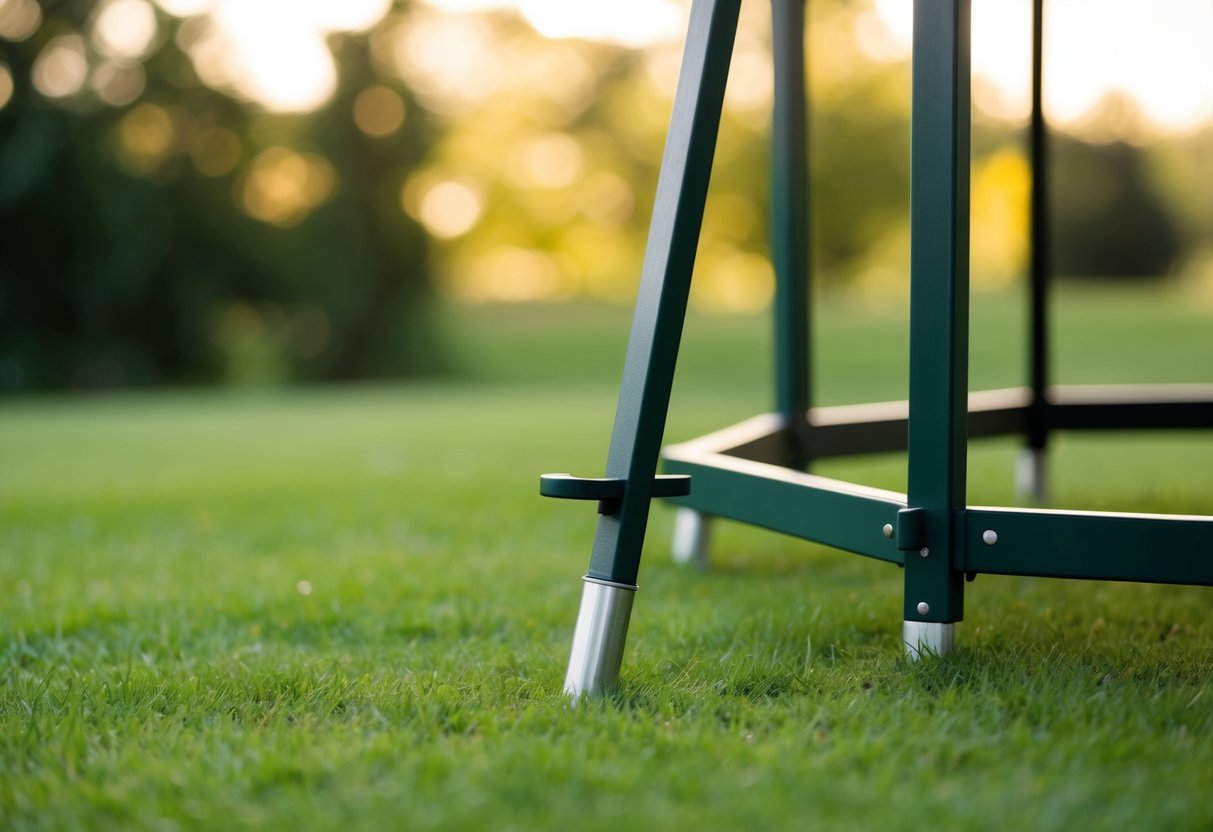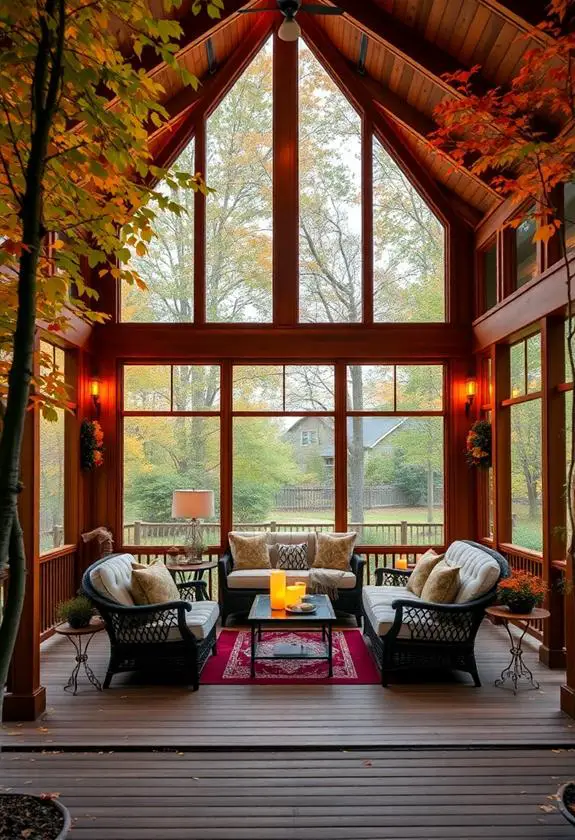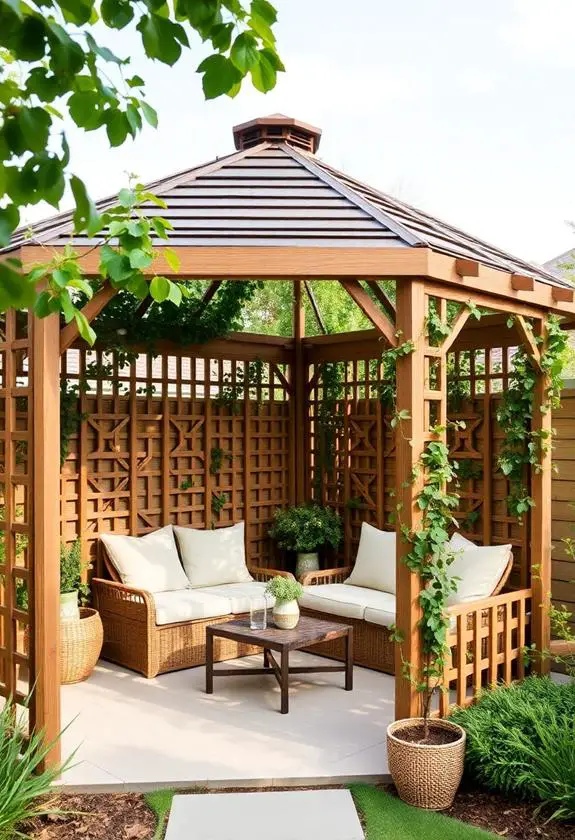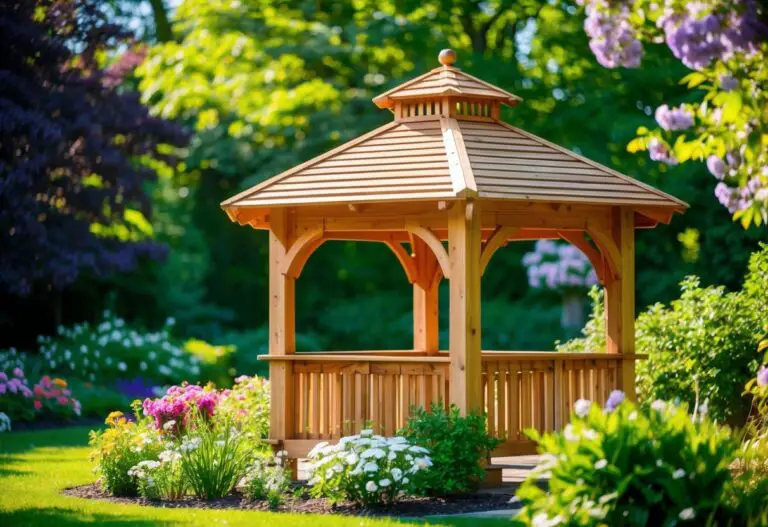Metal gazebos add style and comfort to outdoor spaces, but they also come with safety concerns. You might wonder if your metal gazebo needs grounding. Grounding a metal gazebo is a smart safety move that can protect you and your loved ones from electric shocks during storms.

Lightning strikes can be dangerous, especially for metal structures. By grounding your gazebo, you create a safe path for electricity to travel into the earth. This simple step can make a big difference in keeping you safe while enjoying your outdoor haven.
While grounding doesn’t make your gazebo completely storm-proof, it does lower the risks. It’s a quick and easy way to boost safety without changing how your gazebo looks or works. Let’s explore why grounding matters and how you can do it.
Key Takeaways
- Grounding metal gazebos helps protect against lightning strikes
- You can ground a gazebo using copper rods driven into the earth
- Proper grounding increases safety but doesn’t make gazebos safe shelters during storms
Why Ground A Metal Gazebo?
Protecting your metal gazebo from lightning strikes is a smart move. Metal conducts electricity, which can make your gazebo a target during storms.
Grounding creates a safe path for electric currents to flow into the earth. This reduces the risk of you or your loved ones getting shocked if lightning hits.
You might need to ground your gazebo to meet local building codes. Some areas require it for safety reasons. It’s best to check with your local authorities to be sure.
Here’s a simple way to ground your gazebo:
- Get copper grounding rods
- Mount them to the gazebo’s base
- Drive the rods at least 6 inches into the ground
By taking these steps, you’ll make your outdoor space safer for everyone. It’s a small effort that can give you peace of mind during stormy weather.
Remember, safety should always come first when it comes to your outdoor structures. Grounding your metal gazebo is a simple way to protect yourself and your guests.
How To Ground A Metal Gazebo
Grounding your metal gazebo is important for safety. You’ll need copper rods, grounding wire, and a grounding clamp to get started.
First, mount copper rods to the base of your gazebo. Make sure to space them evenly around the structure.
Next, drive the rods into the ground. Push them at least 6 inches deep for best results. This helps create a solid connection with the earth.
Now it’s time to connect the rods. Use grounding wire to link them together. Attach the wire to each rod with a grounding clamp.
For extra stability, you can use concrete footings or blocks. These add weight and help anchor your gazebo.
If you have a permanent gazebo, consider using metal stakes or concrete footings for a more secure setup.
Don’t forget about sandbags! They’re a quick and easy way to add weight to your gazebo legs. Use about 25 pounds per leg for a 10×10 foot structure.
Remember, while grounding makes your gazebo safer, it’s still best to stay away during thunderstorms. Your safety comes first!
Benefits Of Grounding
Grounding your metal gazebo can keep you safer during storms. It helps protect against lightning strikes. This reduces the risk of injury if you’re near the gazebo when lightning hits.
You’ll have more peace of mind knowing your gazebo is grounded. You can relax and enjoy your outdoor space without worrying as much about safety issues.
Grounding may help your gazebo stand up better to high winds. It can improve wind resistance by creating a more stable structure. This means less chance of damage during storms.
Many local building codes require grounding for metal structures. By grounding your gazebo, you’ll be following the rules. This can save you headaches with inspectors or neighbors down the road.
Here are some key benefits of grounding:
- Improved safety during thunderstorms
- Better protection against lightning
- Increased stability in windy conditions
- Compliance with local regulations
- Greater peace of mind for you and your guests
Remember, a grounded gazebo isn’t 100% safe in severe weather. It’s still best to go inside during storms. But grounding gives you extra protection for those times when you need to use your gazebo as a quick shelter.
Frequently Asked Questions
Metal gazebos need proper grounding and anchoring for safety. Here are some common questions about these topics.
Is grounding a metal shed similar to grounding a gazebo, and how?
Grounding a metal shed is like grounding a gazebo. Both use copper rods and wires to create a safe path for electricity. You’ll need to connect the metal frame to grounding rods driven into the earth. This protects the structure and people inside from lightning strikes.
Can a metal gazebo provide safety during a thunderstorm?
A metal gazebo is not a safe place during a thunderstorm. Even when grounded, it can still be dangerous. It’s best to go inside a solid building if there’s lightning. If you must use the gazebo for shelter, stay away from metal parts and don’t touch anything conductive.
What specific steps are necessary to secure a metal gazebo to the ground?
To secure your metal gazebo:
- Mark spots for anchors at each leg.
- Dig holes or use a drill for ground screws.
- Install anchors or screws.
- Attach the gazebo legs to the anchors.
For extra stability, add weight to each leg. Use 25 pounds per leg for a 10×10 foot gazebo. Sandbags work well and are cheap. This helps keep your gazebo in place during windy weather.





